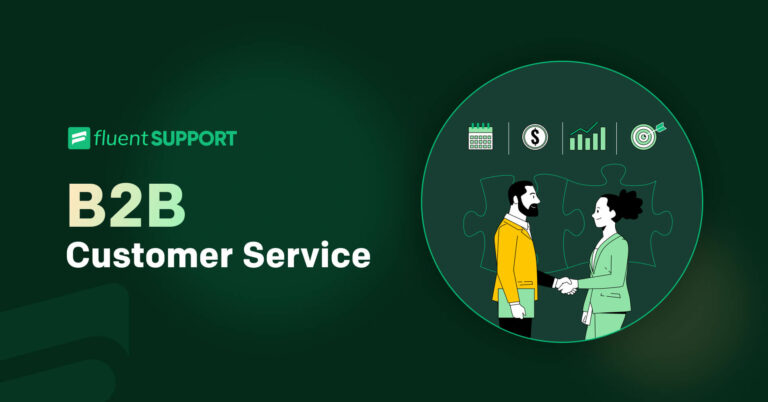

We will never spam you. We will only send you product updates and tips.
Customer onboarding is the main crucial part of any business. But what is customer onboarding?
Onboarding is the process that helps new customers come on board with your business, set up their accounts, and help them understand your products or features. Customer onboarding best practices help you get the most out of your onboarding system.
In this blog, we’ll cover what are customer onboarding best practices and how you can implement them in your business.
What is customer onboarding & Why it matter?
Customer onboarding is the process where you nurture your new customers, help them understand the value of your products, and educate them about use cases & benefits. Onboarding is important because it’s the best place to start a mutual & beneficial connection with your customers from the beginning.
Customer onboarding ensures long-term success. Onboarding best practices help you to –
- Retain customers after their first purchase.
- Keep your customers engaged with your products regularly.
- Amplify the value of your products.
- Increases customer success rate.
- Reduces churn and increases profits.
To make an impactful client onboarding, you need to implement best practices to create meaningful value for your customers.
9 Customer onboarding best practices small businesses should follow
To provide a great customer experience, you need to follow customer onboarding best practices. These best practices are tested and implemented widely by companies around the world.
These techniques will help you acquire new customers with your product’s features and create a seamless onboarding experience.
1. Understand your customers
The first step toward a better onboarding system is to create your buyer persona. Understanding your customers is essential if you want to retain new customers. You have to learn about their desire, what they like and have to anticipate what problems they might face and their pain points. You also need to devise solutions for these problems in real-time. Customer data will help you set the customer’s onboarding steps and expectations.
2. Set onboarding expectations
Always be practical while delivering. You don’t want your customers to expect something that does not align with your product. Be straightforward and reasonable with your marketing campaign. Make it clear what customers will get from your product.
Reinstate that expectation in your onboarding process, so customers meet their expectations. When you satisfy your customers from the beginning of their journey, they will likely stay with you longer.
3. Provide real-time value
Sure your product provides value for customers; that’s why they want it. But you need to re-emphasize the value whenever you can. The best way to do this is with a customer welcome email. Send a personalized email to your customers after onboarding. Use the email to provide real-time value with unique use cases explaining specific solutions to the customer’s pain points.
If you offer high ticketing services or products and your customers are limited, you can record a video to impress the customers. Videos are great for connecting with customers on a personal level. You can also offer a one-to-one call to kick-start the customer onboarding journey.
4. Stay in touch regularly
You sent the first welcome email; now what? Most businesses make the mistake of not continuing the communication further. Customer onboarding is a timely process. You will need to stay in touch with customers.
The best way to communicate with customers is by sending them automated email series. You can set up an onboarding email series that you can send automatically after a customer onboard. These emails can be highly optimized and offer customers a step-by-step to-do list customers should do to get the most value.
Always follow up after a successful onboarding. Random check-in from time to time is a nice way to delight customers. But be aware that not everybody likes regular direct communications. After they get familiar with the product, you can offer in-app notifications for internal communications and higher customer engagement.
5. Set customer-focused goals
Understanding customers’ pain points is part of customer onboarding best practices. Every customer has different goals they might want to achieve with your product. Recognize customer goals and align them with yours. Help customers succeed through onboarding; customers will log in for more value without push.
6. Gather customer feedback
Always gather customer feedback at every touchpoint of customer onboarding. These data will help you understand what’s working and what’s not. You can immediately ensure your customers are not facing any hurdles in the process. Data will help you understand your customer’s needs and grow customer relations further.
You can use customer satisfaction surveys, polls, or analytics to collect data from the first email sent or when a customer lands on your website. You can use a good helpdesk to collect customer support ticket data too. With data, you can learn about customer behavior and use it to make your onboarding process more efficient.
7. Create education hubs
Customers may understand the value you are offering, but they may not have the education. Offer product education through frequently asked questions, documentation, knowledge base, tutorials and videos. Offering these education hubs from the beginning can pique customers’ interest and help them take initial actions to learn. Often customers lose interest in onboarding when there are no learning resources available.
You can add interactive walk-throughs to your onboarding process. These walk-throughs are very effective if you can implement them correctly. Show options to ignore the process and have linked to required learning resources on each step. It will keep customers engaged with your onboarding process.
8. Offer proactive support
You may have educational resources or guides on interactive walk-throughs. But it does not hurt to have stand-alone support for onboarding customers. You can impress new customers with proactive support before they ask for help.
The main focus of any onboarding is to help customers start reaping your product’s value in less time. Focus on the relationship you are trying to build with customers. Positive interactions at every customer touch point help to build trust among customers. And trust builds a loyal customer base. Happy customer relations is the antidote of churns.
Great experience will turn your customers into fans and recommend you to others. When customers achieve a milestone in the onboarding process, proactively compliment them by celebrating their success. Also, remind them how close they are to reaching their goals.
9. Consistently measures and change
Consistently measure your onboarding results, find out where friction happens, analyze customer metrics and customer feedback for real-time information. It will help you to know what is working and what’s not, and where to improve.
Experiencing and learning the process will help you build a quality customer onboarding process. A seamless onboarding system increases customer lifetime value. Attracting new customers is expensive, but retaining existing ones is easy when you have an efficient system.
Customer Onboarding Checklist
A customer onboarding checklist helps you keep track of important steps & metrics you should implement when developing your onboarding process.
- Create automated welcome email series to encourage customers engagement.
- Develop self-service tools with resources for successful onboarding.
- Always follow up with users after a successful onboarding.
- Proactively offer support through live chats, helpdesk & video chat.
- Give customers the option to skip the onboarding process if they feel like it.
- Make your onboarding short, fun, yet effective through actionable tasks.
- Collect data on every touchpoint and gather customer feedback when possible.
- Analyze the data and learn from it. Make changes to your onboarding process when necessary.
- Celebrate customers’ milestones and remind them how close they are to their goals.
- Do random check-ins for inactive customers or appoint success managers if needed for long-term customer retention.
Conclusion
Acquiring new customers and retaining them through the onboarding process is not an easy feat. Each customer has unique needs. Tailor your onboarding process to fulfill their needs and offer a personalized experience.
Do not bombard customers with information. Break it down into digestible pieces. Do random checks with customers, not be afraid to ask hard questions, and take customers’ feedback to work. A great customer onboarding experience reduces churn and develops profitable customer relations.





Leave a Reply
You must be logged in to post a comment.